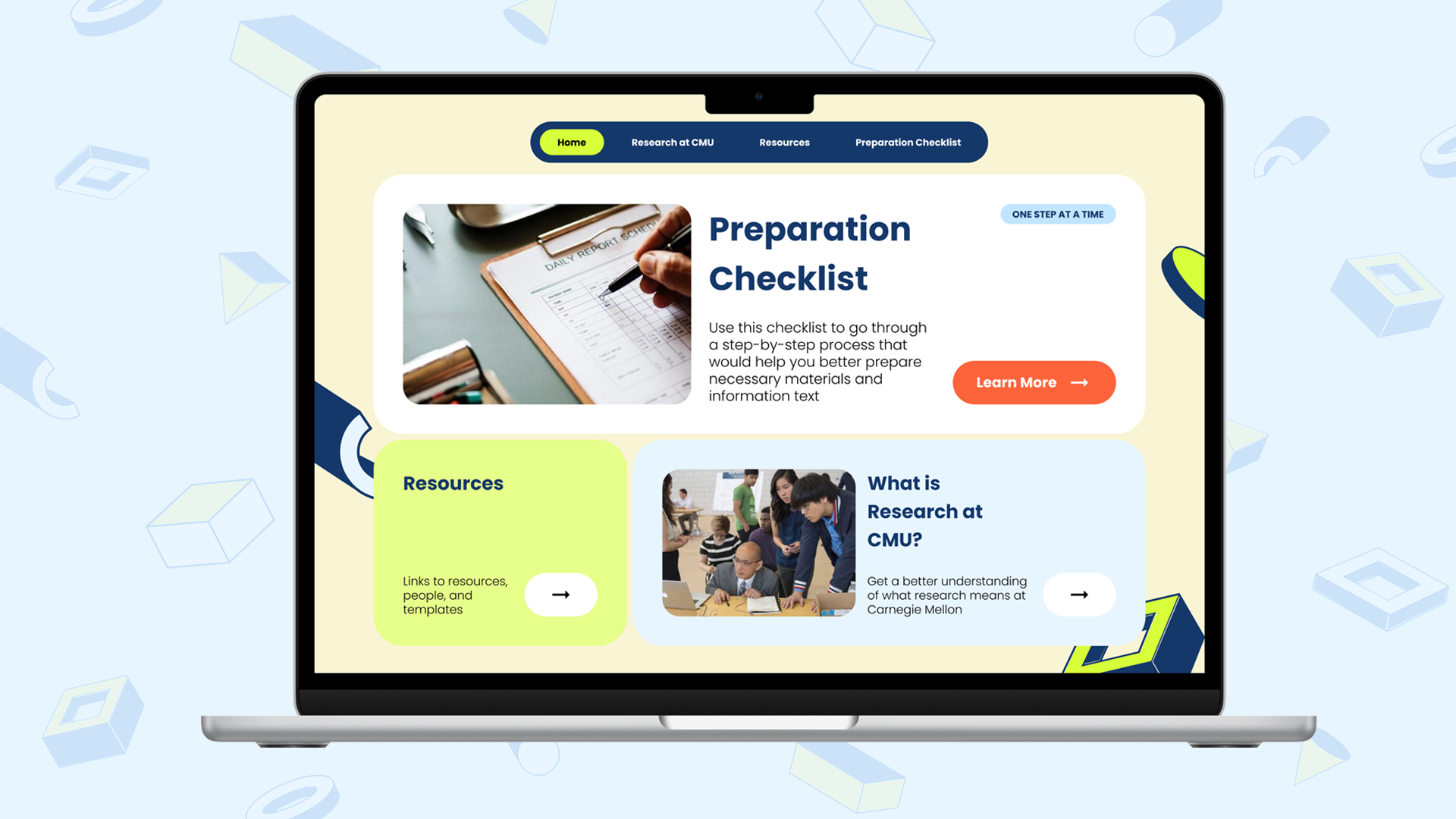
Research opportunities at Carnegie Mellon are highly decentralized, making it difficult for undergraduates to find and navigate them. Our team designed an interactive learning module that centralizes information and guides students through the research discovery process in a clear, approachable way.
As Product Designer & Researcher, I led user interviews, contextual inquiries, and usability tests to identify pain points in the current system. I synthesized findings into journey maps and insights that informed design decisions. I then created wireframes and interactive prototypes in Figma, iterating based on feedback to deliver an intuitive and accessible experience that helps students confidently pursue research opportunities.
A hub where you can find everything you need to prepare to apply to undergraduate research.

Highlights how research varies by discipline and directs users to explore opportunities by selecting their department.

Provides a checklist that guides a step-by-step preparation process for securing a research position.
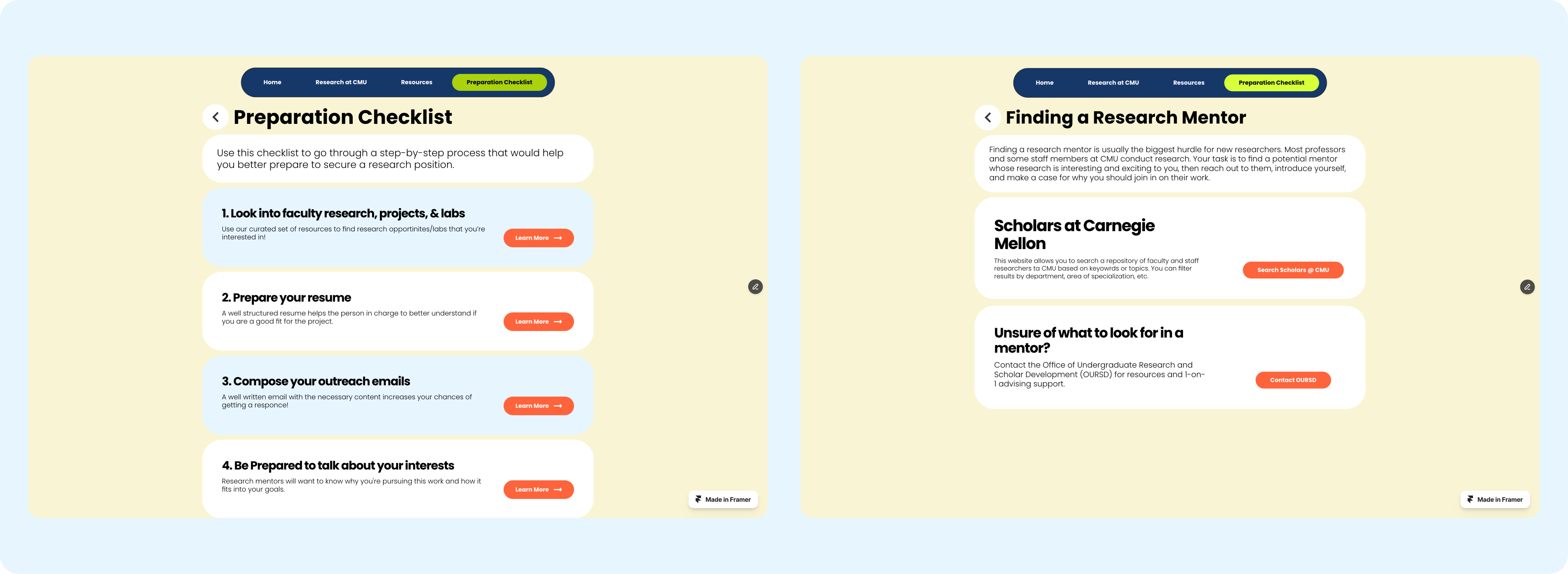
Offers a collection of email and resume templates with examples to help students confidently prepare their application materials.

Provides resources connecting students to dedicated staff and advisors who can support them in finding and applying for research opportunities.


We plan on working both independently and with OURSD via secondary research on other universities and the program at CMU, primary research with CMU students from different backgrounds, and modeling using our data.

Many universities provide centralized portals or interactive guides that make research opportunities easy to find and navigate. In contrast, CMU’s decentralized system forces students to search across multiple sites and departments, creating unnecessary friction.
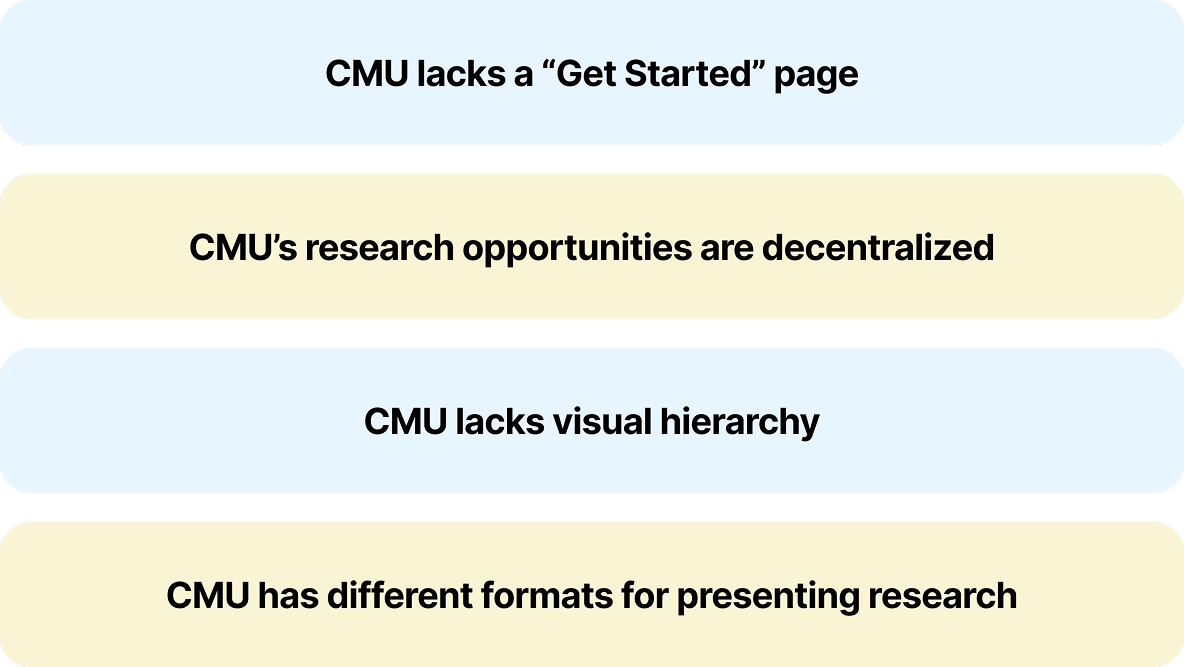

Our project collaborated with Carnegie Mellon University's Office of Undergraduate Reasearch and Scholarly Development. We were in contact with Director Dr. Richelle Bernazzoli, Associate Dr. Paige Zalman, and Scholar Development Coordinator Alex Johnson. We had the privilege of interviewing OURSD to gain insights into the current state of undergraduate research at CMU
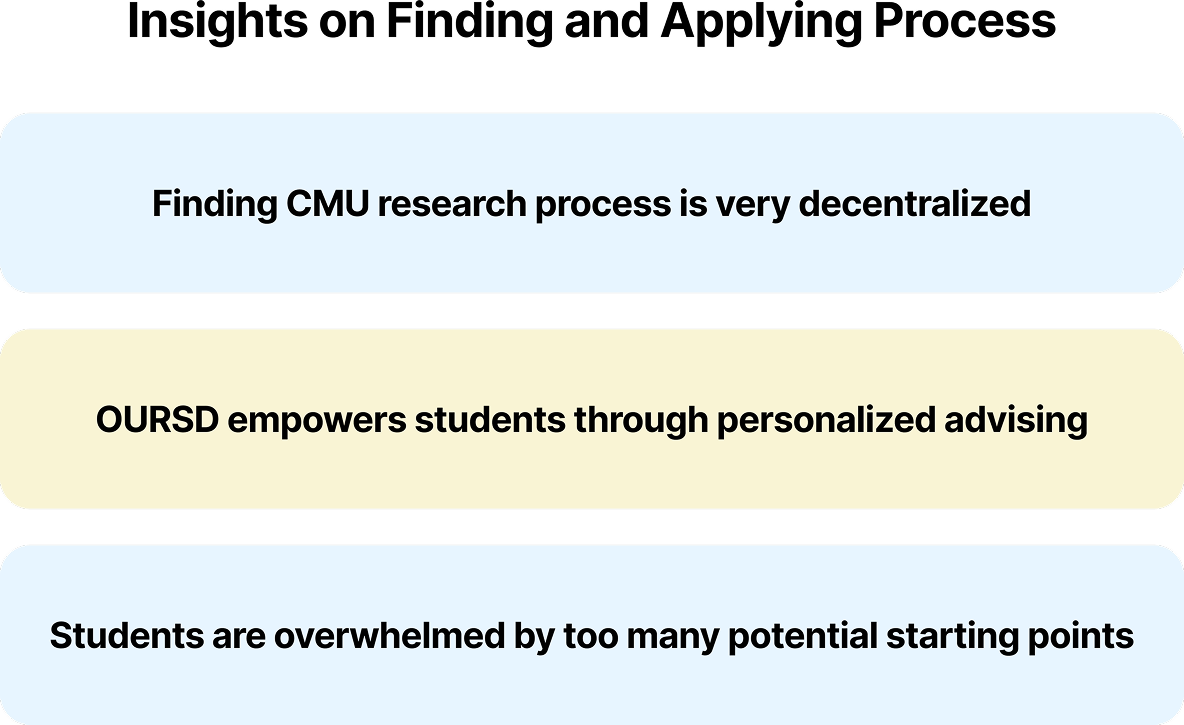
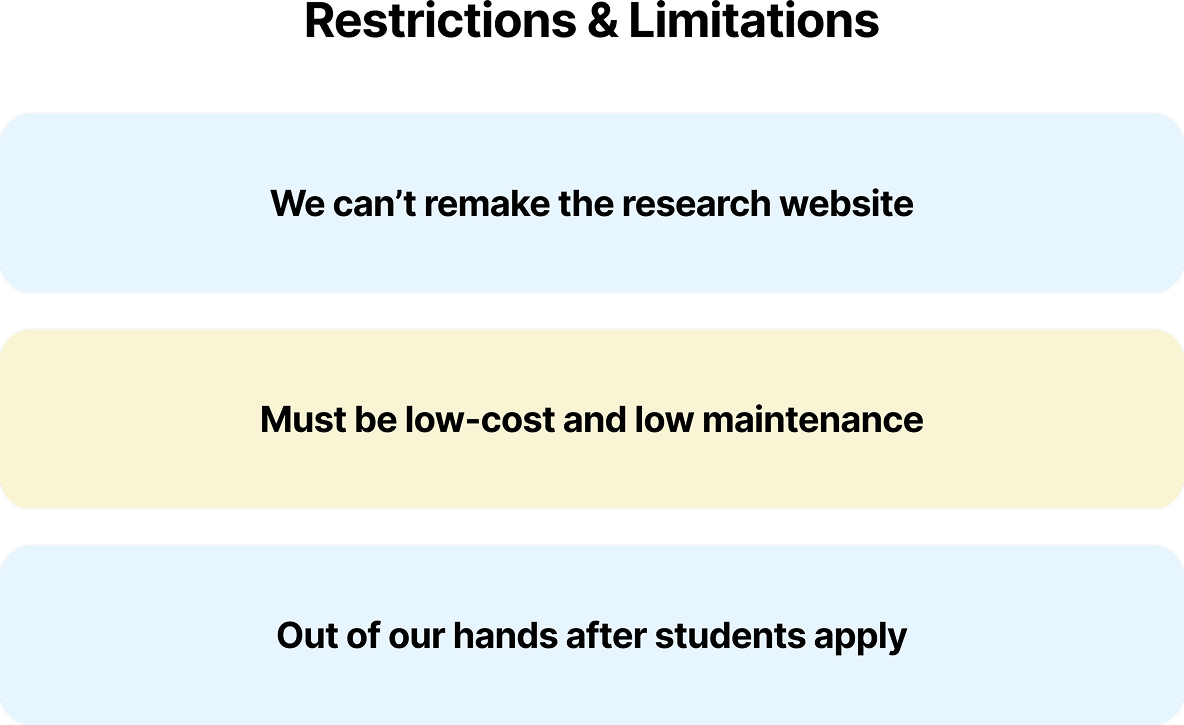
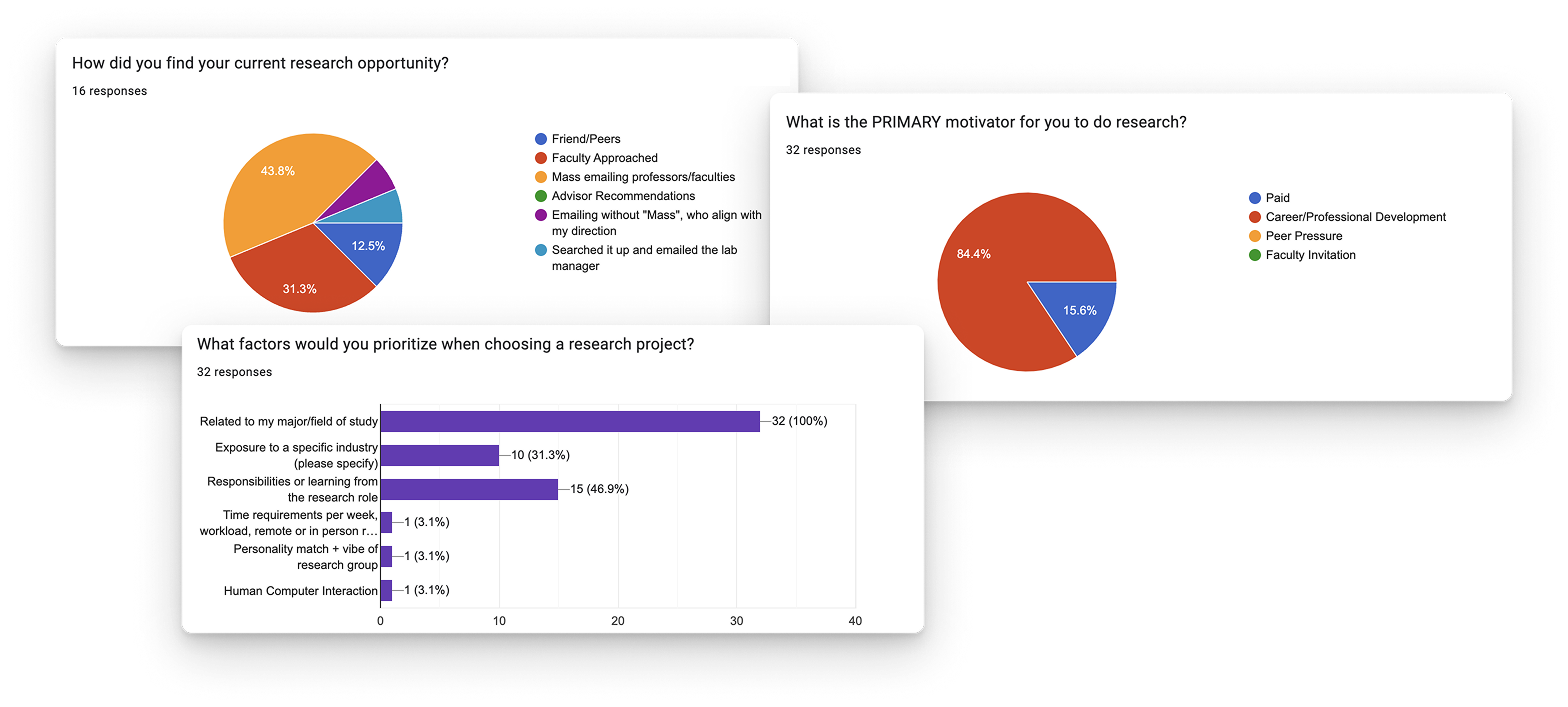
Our team sent out a survey to undergraduate students at CMU to gather insights into the current process that CMU undergraduates experience with finding research.. We received 32 responses across 8 different schools at CMU.
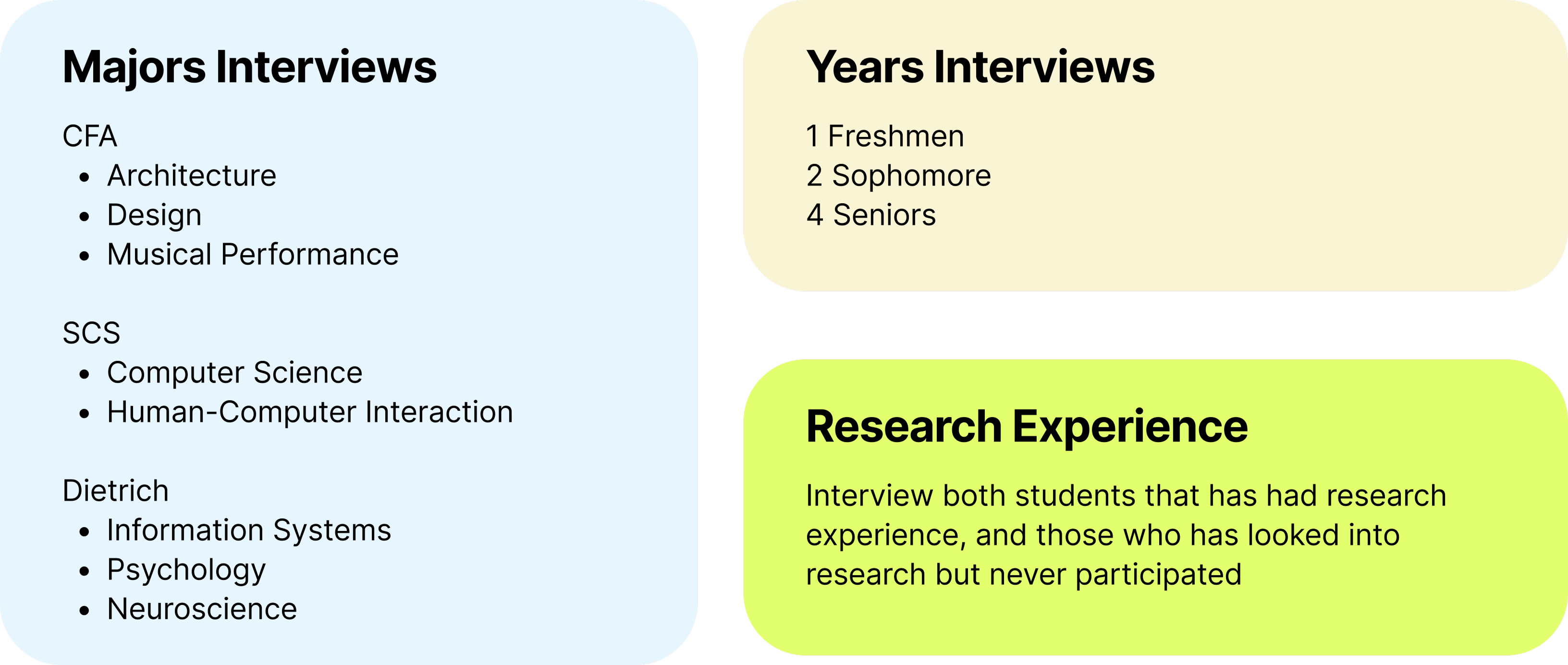

Our research protocol tries to simulate the initial process of looking for research, from the initial curiosity of what research is to pinpointing a few specific projects they want to participate in and understand who they can contact the individual in charge. We hope through this we could observe the process and understand painpoints and priorities students have during each stage of the process.

Students choose research projects based primarily on interest in the topic.
Resources are buried in deep website structures, making them hard to find.
Students feel intimidated and uncertain about whether they qualify for opportunities.
Poor visual structure makes it difficult for students to scan and identify relevant projects.
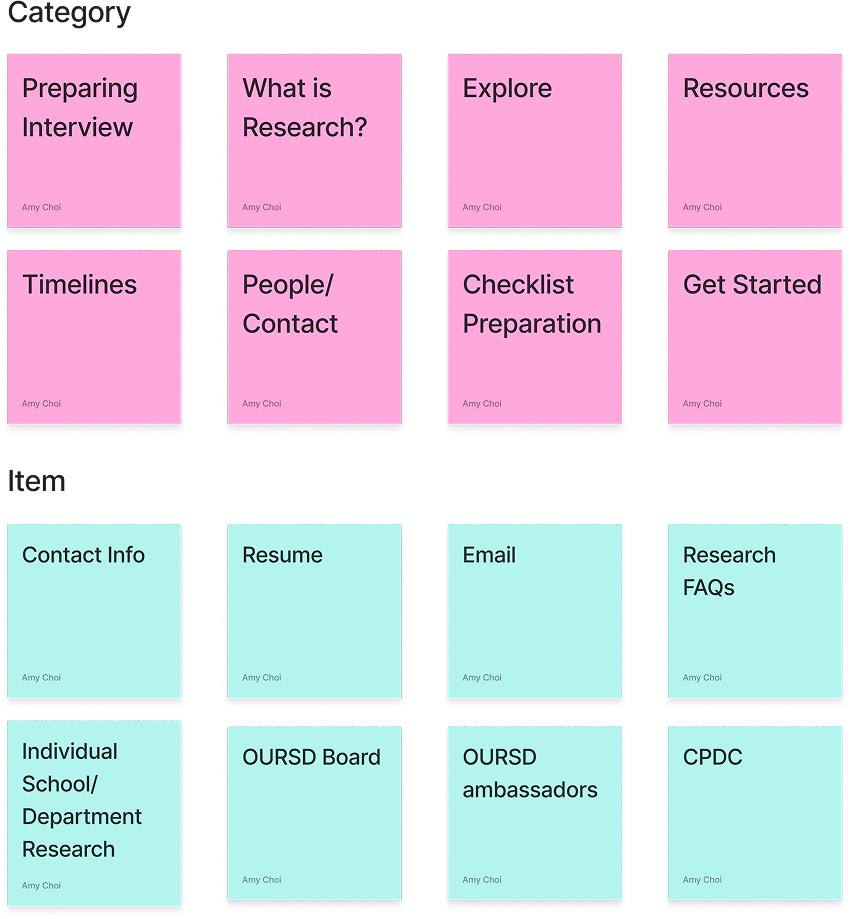

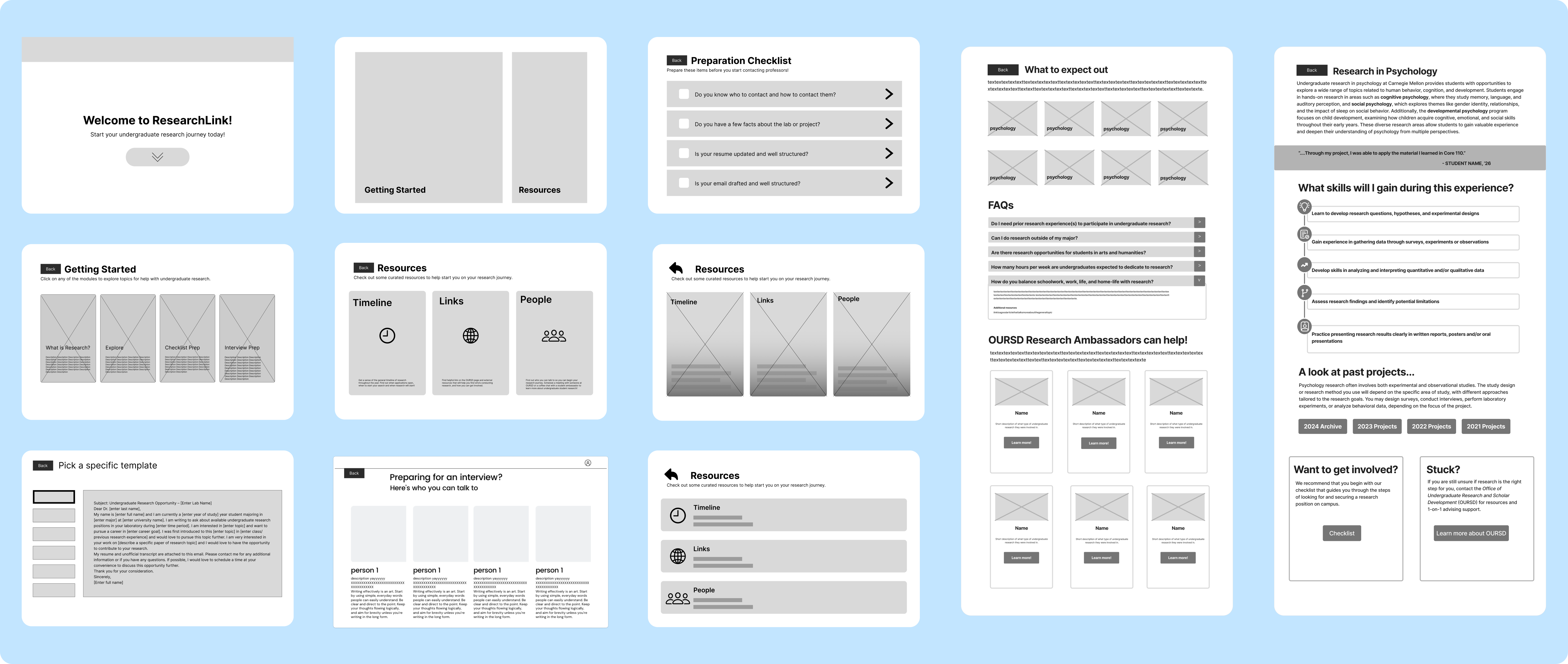
Based on our sitemap we made, we made a low-fi prototype to user testing. We wanted to make sure the flow makes sense and is what the user expects of the page to match.
Before showing the page, ask the testing participant about their expectations of the page
Showcase the page to the participant and ask them to think aloud
Ask the participant how has the page aligned with their expectations
specifically the checklist. The checklist steps were worded as questions, but users were confused of what was being asked of them.
especially the checklists, email templates, and FAQs. But they wished it was more visible in the website, instead of nested.
There was a lack of guidance on who to contact and what they can help, which affected users' confidence in find the right resources.
Users emphasized the importance of this information, especially people new to research. Having more relevant information helps differentiate between research disciplines
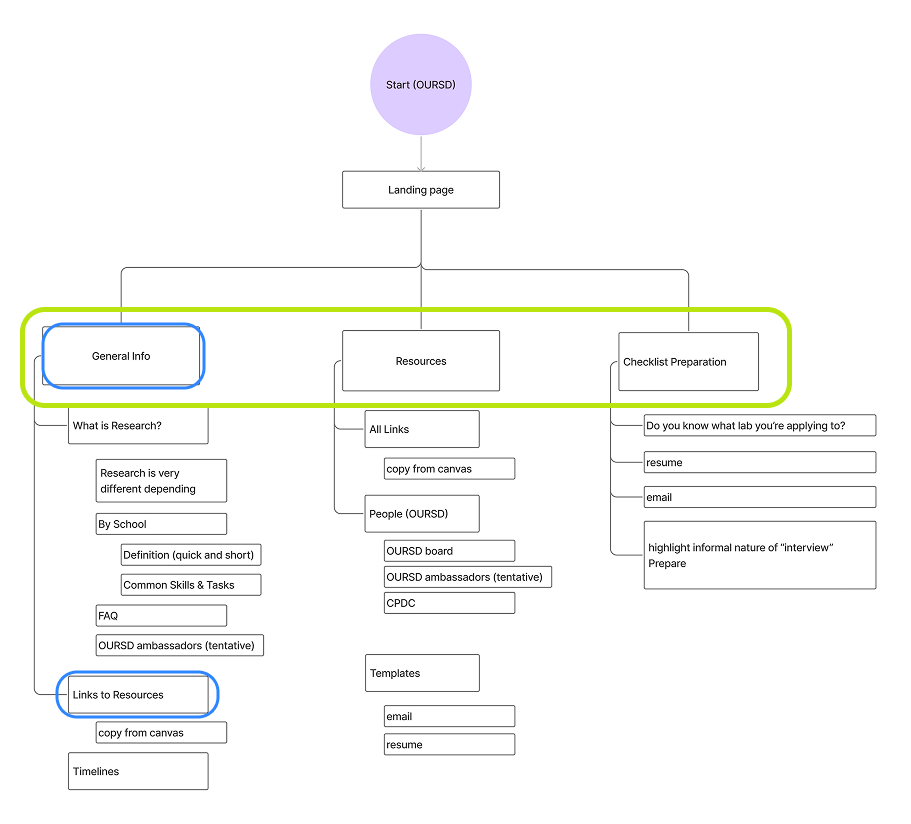
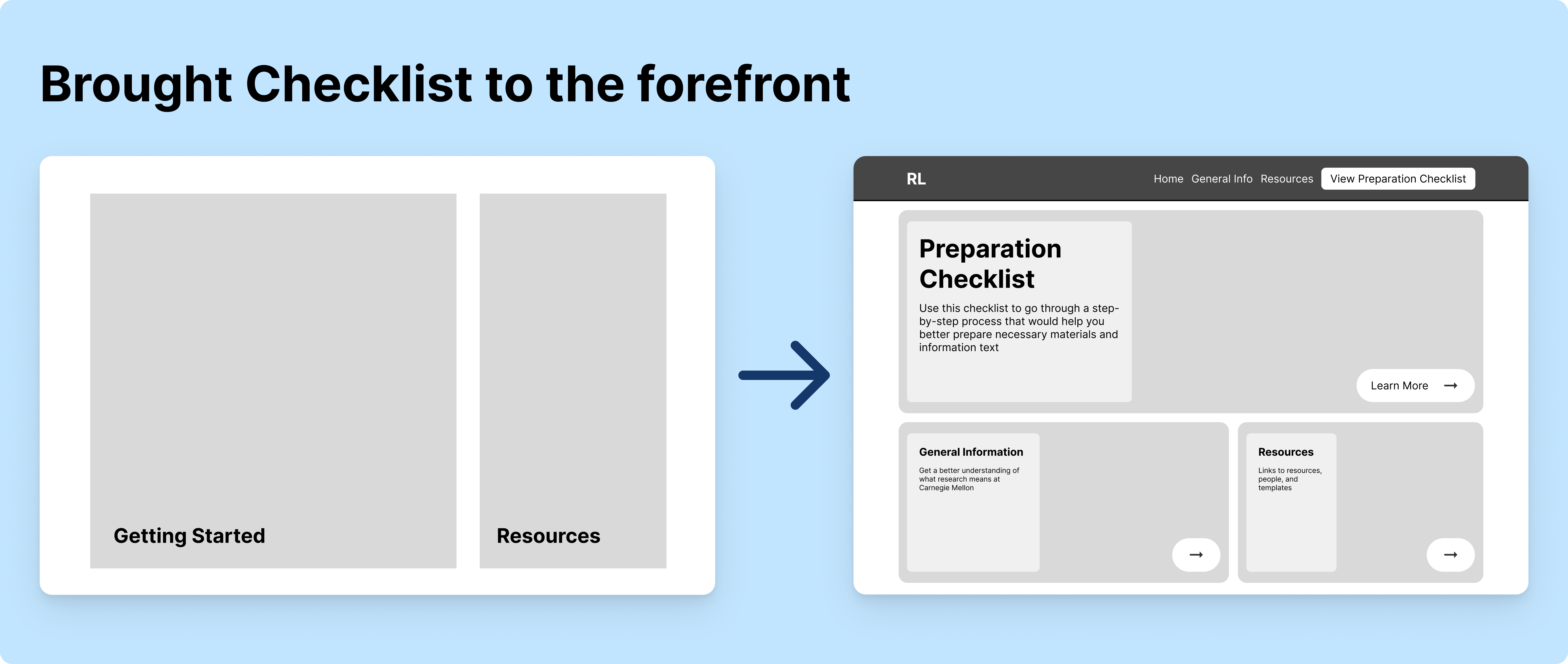
A lot of participants emphasized the implied importance of a preparation checklist and they stated that they would go check the checklist as one of their first resources. In our low-fi prototype, important information were too nested which is exactly what CMU's website are. We don't want that, so we brought the checklist page to the home page.
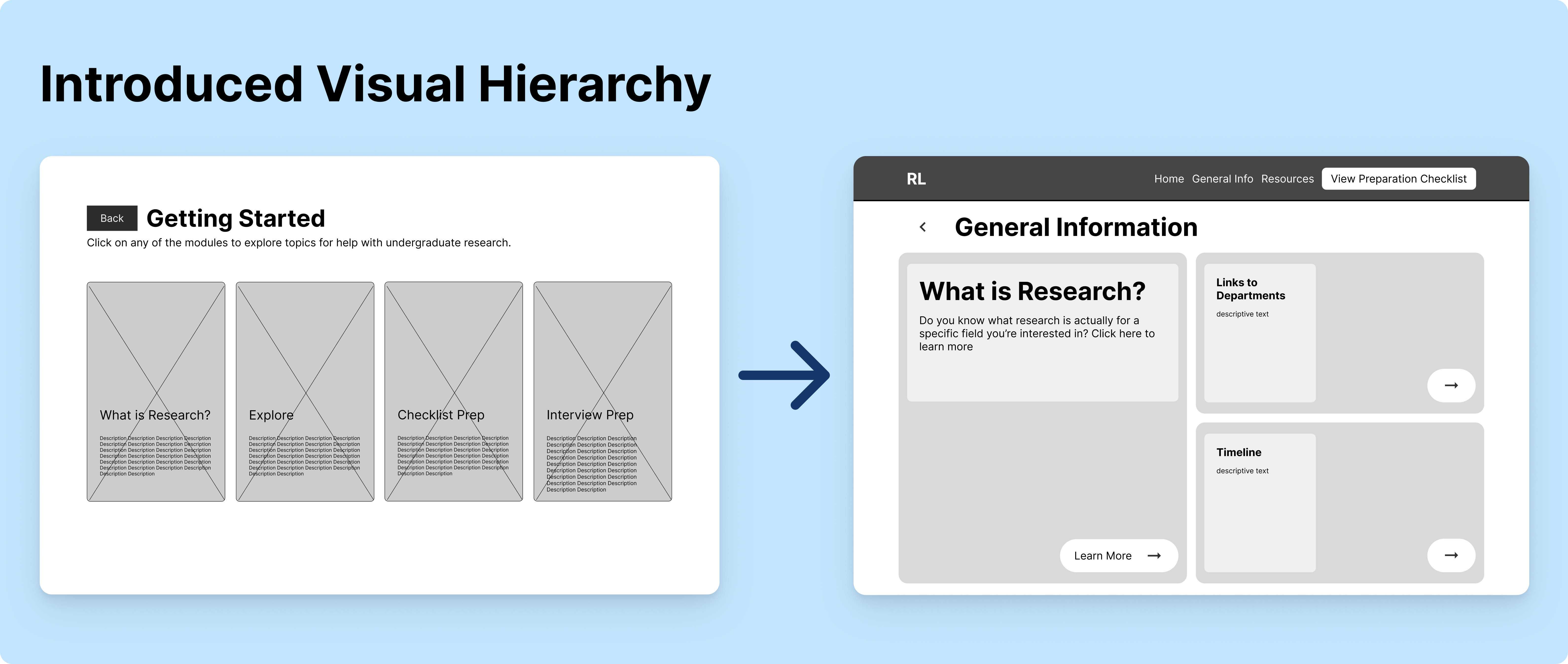
When observing the participants' actions and words, we realized that some resources are more likely to be view/prioritized. So we reflected that through visual hierarchy.
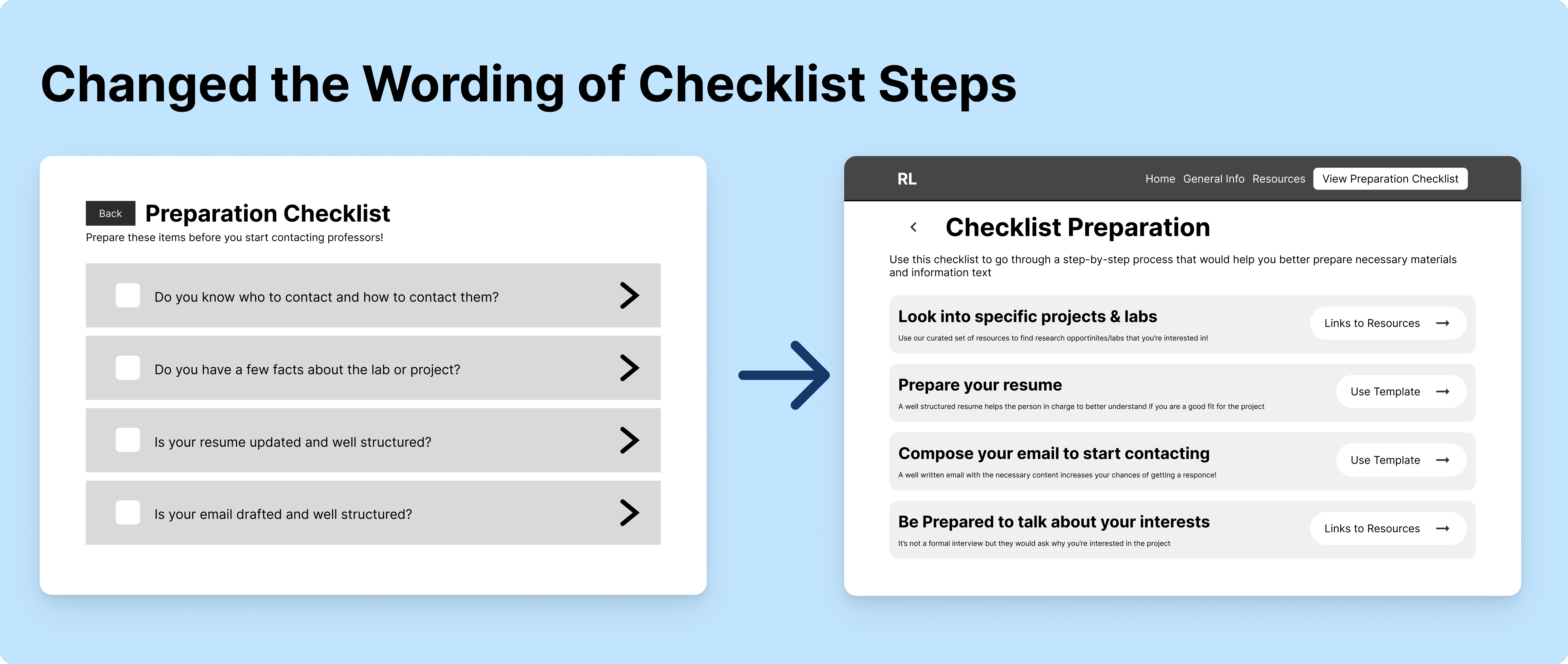
The checklist is to guide students through a step by step process to prepare to apply to research opportunities. But the question format was confusing on exact the task was, so we changed the wording to be a statement/phrases.
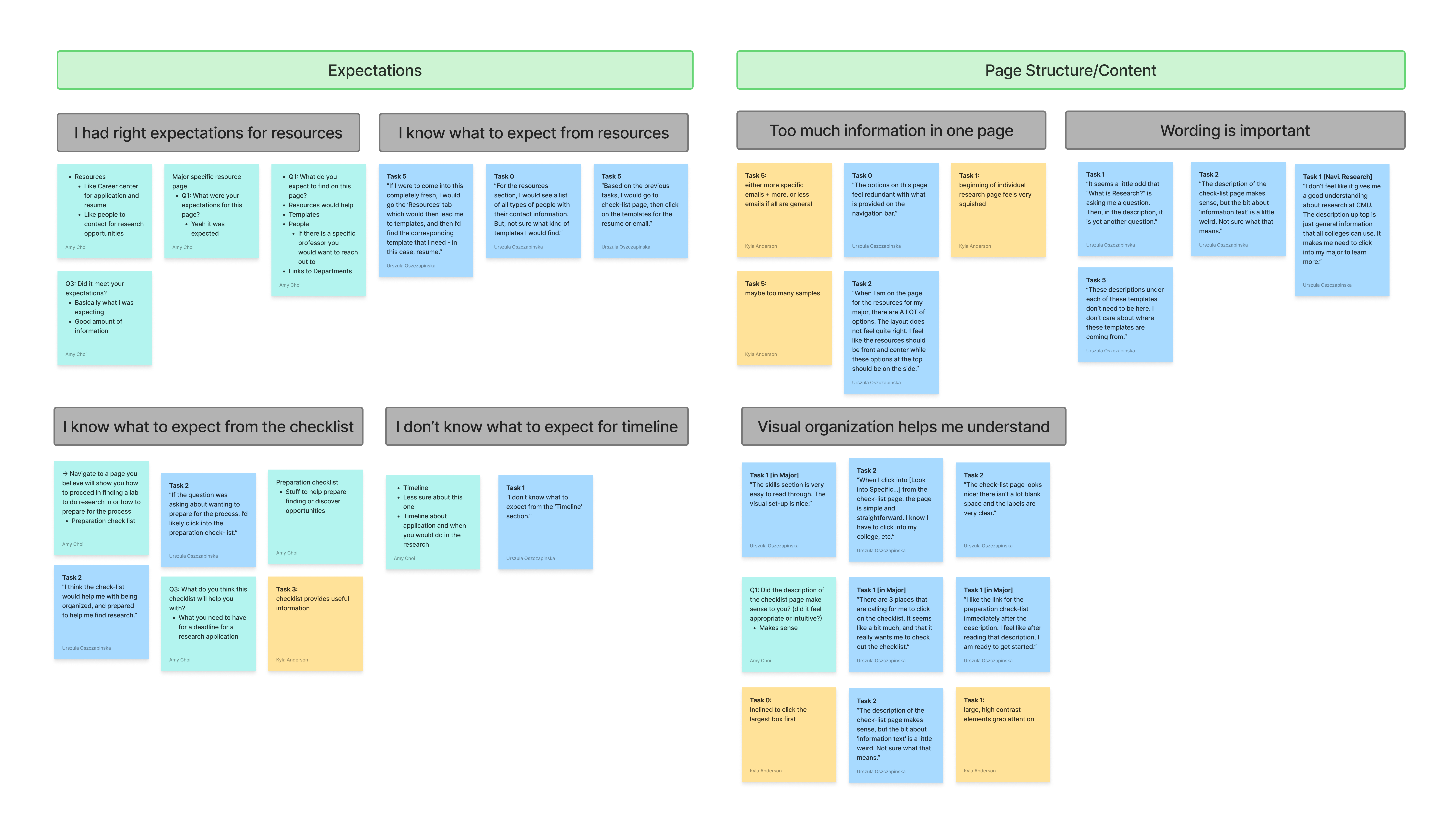
specifically the checklist. The checklist steps were worded as questions, but users were confused of what was being asked of them.
especially the checklists, email templates, and FAQs. But they wished it was more visible in the website, instead of nested.
There was a lack of guidance on who to contact and what they can help, which affected users' confidence in find the right resources.
Users emphasized the importance of this information, especially people new to research. Having more relevant information helps differentiate between research disciplines
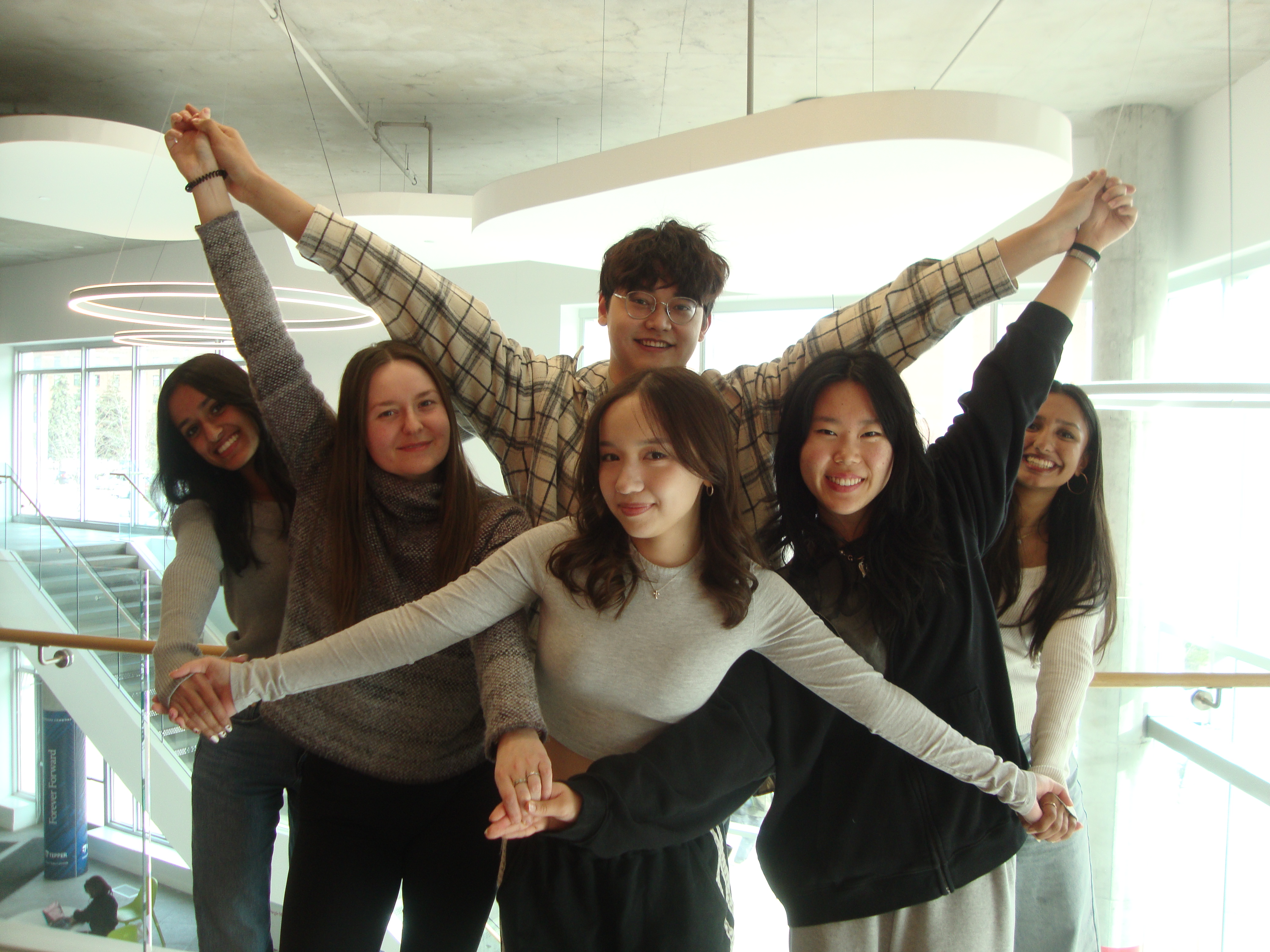
There are still next steps to consider. We have to measure our metrics of success: Engagement, retention, confidence shift, and qualitative feedback.
Our tools to measure are Microsoft Clarity and Google Analytics for:
Working in ResearchLink was my first ever experience launching a product 0 to 1 and that's invaluable. Thank you to my team of wonderful people and thank you to OURSD for partnering with us and allowing us to share this tool to so many undergraduate students at CMU!